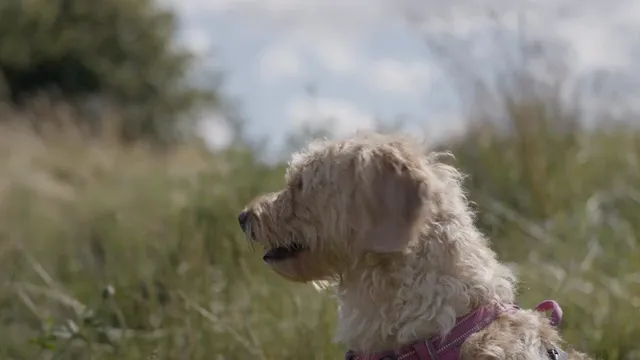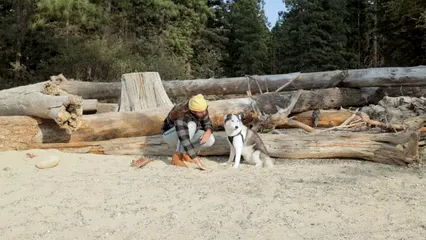The Importance of Choosing the Right Dog Cart Pulling Harness
Choosing the right harness is crucial for your dog. An ill-fitting harness can cause discomfort or even injuries. For example, studies show that improper harness fit leads to a significant number of harness-related injuries.
Every dog breed has unique anatomy. Larger breeds, like Saint Bernards, require different support than smaller breeds, such as Dachshunds. Understanding these differences helps you pick a suitable harness. Don’t forget to check out this Measuring Tape for Dogs to get the perfect fit!
Comfort is key. A well-fitted harness distributes weight evenly, reducing strain on your dog’s neck and back. This allows your furry friend to pull with ease and enjoy the activity.
To ensure the best fit, measure your dog before purchasing. Take the time to understand their size and shape. Remember, a little effort in selecting the right harness goes a long way in keeping your dog happy and safe.
So, grab a measuring tape and get started! Your dog will thank you for it.

Types of Dog Cart Pulling Harnesses
When it comes to dog cart pulling harnesses, variety is key. Different designs cater to specific needs and dog breeds. Here’s a breakdown of popular types of harnesses you might consider:
Siwash Harness
The Siwash harness dates back centuries, originally crafted by Eskimos. This design is durable and simple to use. It’s made from strong materials like nylon and often features fleece padding for comfort. The Siwash harness is ideal for breeds like Siberian Huskies and Alaskan Malamutes, known for their strength. It excels during recreational carting and sledding activities, making it a favorite among enthusiasts.
X-Back Harness
The X-Back harness is similar to the Siwash but with a unique design. It forms an “X” over the dog’s back, which helps distribute weight evenly. This harness is well-suited for activities like cart pulling and skijoring. Most dogs appreciate the comfort it provides, leading to high customer satisfaction ratings.
Weight Pulling Harness
Specially engineered for weight pulling, this harness offers extra padding around the neck. It’s ideal for competitive pulling and allows dogs to exert maximum strength. This harness type is popular in weight pulling competitions, showcasing breeds like American Pit Bull Terriers and Rottweilers. If you’re considering participating in such competitions, make sure to check out this Weight Pulling Harness!
Multipurpose Harness
As the name suggests, this harness is versatile. It can be used for various activities, from carting to sledding. The multipurpose harness features multiple attachment points, making it adaptable for different settings. It’s a great choice for dog owners who want flexibility in their gear. You might also want to look into a Dog Leash that complements your harness!
D-Harness
The D-Harness serves multiple functions, including teaching dogs to wear a harness. It’s simple in design and can be used for light carting tasks. While not as specialized as other harnesses, it’s a reliable option for beginners. For those starting out, you might also consider a Dog Training Treats to reward your pup!
According to recent statistics, the Siwash and X-Back harnesses hold a combined market share of over 60% in the dog pulling gear category. Whether you’re new to carting or a seasoned pro, choosing the right harness is essential for performance and safety. For a detailed comparison of these harness types, check out our harness comparison chart.

Weight Pulling Harness
A weight pulling harness is specially designed for strength. Its unique construction allows dogs to pull heavier loads effectively. These harnesses feature extra padding around the neck, ensuring comfort during intense activities. If you’re serious about weight pulling, having a good harness is essential. You might also want to explore Dog First Aid Kit for safety!
Weight pulling competitions showcase a dog’s power and endurance. In events, dogs can pull loads exceeding their body weight. For example, some breeds, like American Pit Bull Terriers, can pull up to 1,200 pounds! This highlights the importance of a well-constructed harness.
Compared to recreational harnesses, weight pulling harnesses focus on performance. Recreational harnesses are more general, providing comfort for casual activities. In contrast, weight pulling harnesses prioritize stability and support during competitive pulling. This difference is crucial for enhancing a dog’s training and performance in competitions.
Investing in a quality weight pulling harness can significantly boost your dog’s potential. With the right design, your dog can excel in this thrilling sport. Don’t forget to check out the Dog Agility Equipment for some fun training activities!

Training Your Dog to Use a Cart Pulling Harness
Training your dog for cart pulling is a rewarding experience. It builds a strong bond between you and your furry friend. To start, focus on basic commands. Commands like “sit,” “stay,” and “come” can be useful. They establish a foundation for further training.
Once your dog understands basic commands, gradually introduce the cart. Let them sniff it and explore. Start with light weights to avoid overwhelming them. This slow introduction helps prevent anxiety.
Positive reinforcement is key during training. Reward your dog with treats or praise when they perform well. Studies show that using positive reinforcement increases success rates by up to 80%. This approach makes training enjoyable for both you and your dog. You could also use a Dog Clicker Training Tool for effective training!
As your dog becomes comfortable, practice pulling the cart with light loads. Ensure you give plenty of breaks and monitor their comfort. Training sessions should be short and fun to keep their interest.
For detailed training resources and tutorials, check out our recommended links. Remember, patience and consistency are essential for a successful training experience. Understanding dog training commands can enhance your training sessions.

Safety Tips for Using Dog Cart Pulling Harnesses
Safety is paramount when using a dog cart pulling harness. Always monitor your dog during carting activities. Look for signs of fatigue or discomfort. These can include heavy panting or reluctance to pull.
Recognizing signs of distress is crucial. If your dog seems uneasy, stop immediately. Allow them to rest and hydrate. Regular gear maintenance is equally important. Check for wear and tear on the harness to prevent accidents. A good Dog Safety Vest can also enhance visibility, especially during low light conditions.
Statistics indicate that improper use of harnesses leads to safety incidents. Ensuring your equipment is in good condition can significantly reduce risks.
Encourage your fellow dog owners to share their experiences and safety tips. A community sharing best practices can enhance everyone’s carting experience.

Conclusion
In this guide, we covered the essentials of dog cart pulling harnesses. Selecting the right harness is vital for your dog’s comfort and safety. A well-fitted harness prevents injuries and enhances your dog’s performance.
Proper training is equally important. It helps your dog adjust to pulling and boosts their confidence. With patience and consistency, you can teach your furry friend to enjoy this activity. A Dog Training Guide Book can be an excellent resource!
Carting is a fun, engaging way to bond with your dog. It offers both exercise and mental stimulation. So why not give it a try? Your dog will love the challenge! And don’t forget about a Dog Cooling Mat for those hot summer days!

FAQs
What size dog is suitable for pulling a cart?
Most dog breeds can pull carts, but size matters. Larger breeds like Saint Bernards excel, while smaller ones, such as Terriers, can also participate. Choose a harness that fits their size.
How do I measure my dog for a cart pulling harness?
To measure your dog, use a flexible tape. Measure their girth just behind the front legs and their neck size. This ensures a proper fit for the harness.
Can any dog breed participate in carting?
Yes, many breeds can participate in carting. While larger dogs are common, smaller breeds can also enjoy the activity. It’s all about the right harness and training.
How do I train my dog to use a cart pulling harness?
Start with basic commands, then introduce the cart gradually. Use light weights and positive reinforcement. This makes training enjoyable and effective for your dog.
What are the best practices for maintaining a dog cart pulling harness?
Regularly check your harness for wear and tear. Clean it according to the manufacturer’s instructions. Store it in a cool, dry place to extend its life.
Please let us know what you think about our content by leaving a comment down below!
Thank you for reading till here 🙂
All images from Pexels





